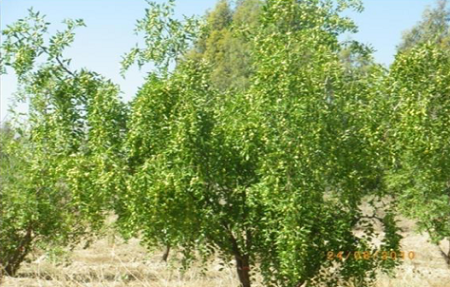
Objective:
Ziziphus jujuba, known as Chinese jujube, is a highly valued plant native to China. Three species are known in Tunisia: Ziziphus lotus, Ziziphus spina-christi and Ziziphus jujuba. The Ziziphus jujuba also known as “anneb” is the most popular specie. This tree (Figure 1), with 10 cm of length and 50 cm of diameter, offer a delicious read fruit (jujube) that was consumed fresh, dried and processed (jams, loaf, cakes, etc.). The aim of this study was to attempt, for the first time, the chemical compositions of Z. jujuba fruits from Tunisia.
Context:
Ziziphus jujuba was introduced in Tunisia a long time ago and is now well acclimated. In Tunisia, Z. jujuba is located especially in the southern country (Mahdia, Gafsa, Kébili, Sfax, Mahres). In the north, some trees are present in private gardens (Ariana, Choutrana). The Ziziphus fruit is known for its widespread use in modern ethnomedecine, especially in arid and semi-arid areas. However, there have not been any studies on the chemical compositions of Z. jujuba fruits from Tunisia.
Contacts:
Ibtissem Taghouti
ibtissem.taghouti@gmail.com
Authors : Ealoui meriem, Ghazghazi hanene & Abdelwahed Laamouri
E-mail : maryoumaa2000@yahoo.fr
Further information:
El Aloui M, Laamouri A, Albouchi A, Cerny M, Mathieu C, Vilarem G, Hasnaoui B. 2014. Chemical compositions of the Tunisian Ziziphus jujuba oil. Emir J Food Agric. 26:602–608.
Laamouri A., 2009 - Contribution à l'étude des jujubiers en Tunisie : Identification, caractérisation, adaptation au déficit hydrique et multiplication. Thèse de Doctorat, INAT, 272 p.